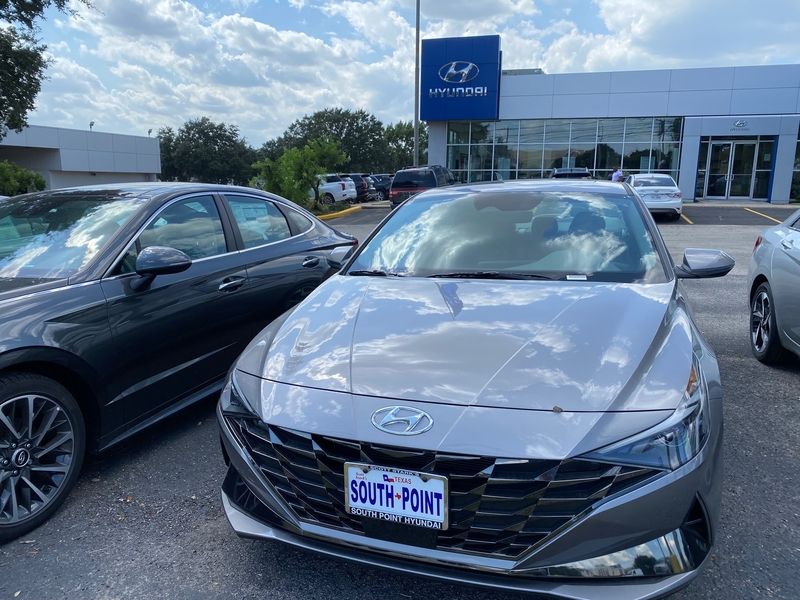
The global chip shortage continued to hammer automakers last month, with Hyundai and Kia reporting lower U.S. sales in September for the second straight month.
Volume dropped 1.8 percent at Hyundai and 4.7 percent at Kia, though both automakers racked up overall gains for the third quarter behind strong July deliveries.
Hyundai said retail sales slipped 5 percent to 49,439 last month as a result of what Randy Parker, head of sales, called a “challenging inventory environment.” Genesis posted a 332 percent increase in Sept. volume, with sales of the GV70 and GV80 crossovers each outpacing combined deliveries of the brand’s three sedans.
Most other automakers will report September and third-quarter sales later Friday. Ford Motor Co. will release results on Monday, followed by Daimler later in the week.
U.S. sales are forecasts to fall about 25 percent in September, based on estimates from J.D. Power, LMC Automotive, TrueCar and Cox Automotive, capping a quarter that will see industry volume drop 13 percent to 14 percent.
Ony three automakers — Toyota, Hyundai and Kia — are forecast to post higher third-quarter results, according to estimates from TrueCar and Edmunds.
Tight microchip stockpiles, combined with other supply chain disruptions, are undermining the industry’s recovery from the pandemic. Severe weather and flooding that struck the Gulf Coast and eastern seaboard also put a dent in volume last month, analysts said.
Some dealers have run out of new vehicles to sell multiple times over the last several months.
The average number of days a new vehicle sat on a dealer lot before being sold was on pace to fall to a record low of 23 days in September, down from 54 days a year ago and down two days from August 2021, J.D. Power said. Kia said it sold 77 percent of available inventory last month.
J.D. Power estimates retail inventories available at dealers dropped by another 22,000 units to 920,000 in September from 942,000 in August. Cox Automotive says there were 1.4 million fewer new vehicles in inventory last month compared to September 2020, and 2.5 million fewer vehicles than in September 2019.
The bottlenecks throughout the production pipeline that have depleted new car and light-truck supplies continue to upend the retail landscape.
Some buyers are balking at higher transaction prices and limited choices and deciding to wait on the sidelines until inventory improves.
Toyota Motor Corp. is on pace to outsell General Motors, the industry’s top U.S. seller for decades, for the second straight quarter. Nissan dealers order the redesigned Frontier pickup in one color and receive a shipment of two trucks in different colors. In Thomaston, Maine, the local Ford dealer, short on new-vehicle inventory, sold a used Chevrolet Corvette late last month out of the new-car showroom.
The seasonally adjusted sales rate for September is expected to fall to 12.1 million to 12.2 million, forecasters said, extending a streak of monthly declines since the sales pace hit a 2021 high of 18.5 million in April. The SAAR hit 16.5 million in September 2020 as the market steadily rebounded from the COVID-19 outbreak.
The rapid slowdown in industry sales since the spring and additional cuts in second-half production plans by automakers is forcing analysts to cut their outlook for 2021 U.S. sales. Cox Automotive on Thursday reduced its 2021 U.S. sales forecast to 15.5 million from 16.5 million, and warned it could be trimmed further.
With low inventories, automakers and dealers continue to slash discounts.
Average incentive spending per new vehicle is expected to fall to $1,755 in September, down from $3,792 in September 2020 and $4,154 in September 2019, J.D. Power and LMC said. Spending as a percentage of the average manufacturer’s suggested retail price is expected to fall to 4 percent, down 5.2 percentage points from September 2020 and down 6.3 percentage points from September 2019. TrueCar estimates average new-vehicle incentives tumbled 42 percent last month to $2,326. (See charts below.)
• There were 25 selling days last month, the same as September 2020.
• Fleet sales are expected to total 120,500 in September, down 22 percent from September 2020, LMC and J.D. Power said.
“The entire U.S. auto industry — including the Asian manufacturers, which were doing a bit better than their domestic counterparts until recently — is in an incredibly volatile position right now and we are seeing inflated retail prices across the board. It’s growing extraordinarily hard to predict who will come out on top heading into the rest of the year, as every automaker is at the mercy of its suppliers and challenged logistics around the globe.”
— Jessica Caldwell, Edmunds’ executive director of insights

